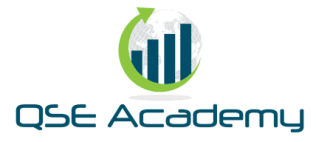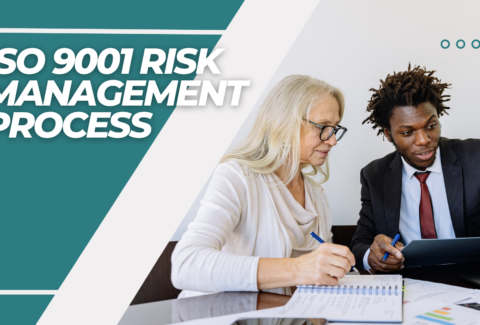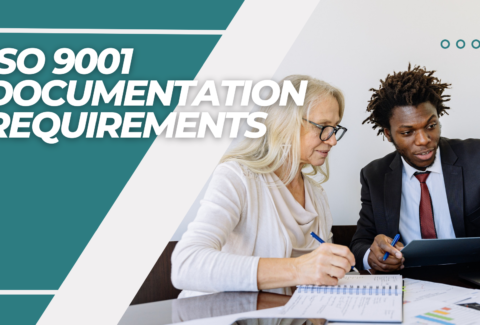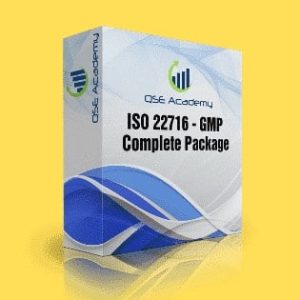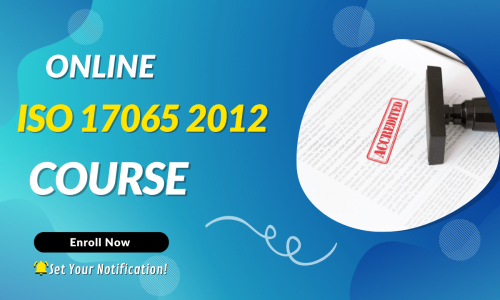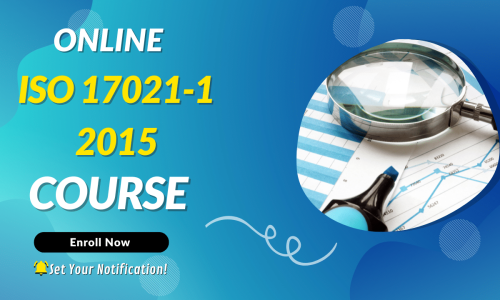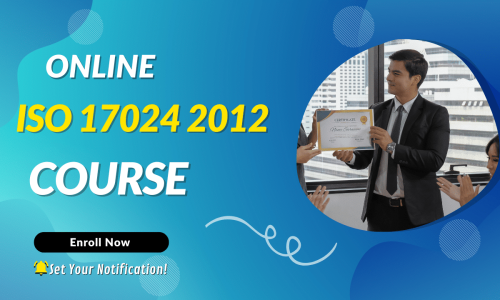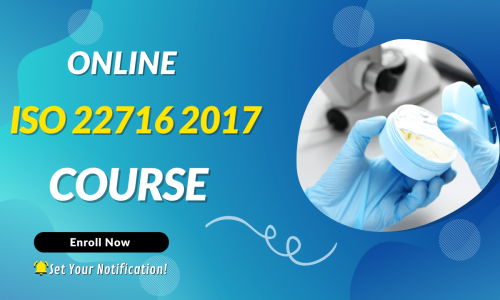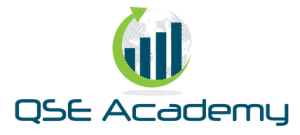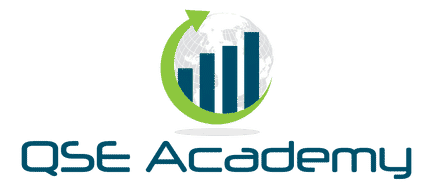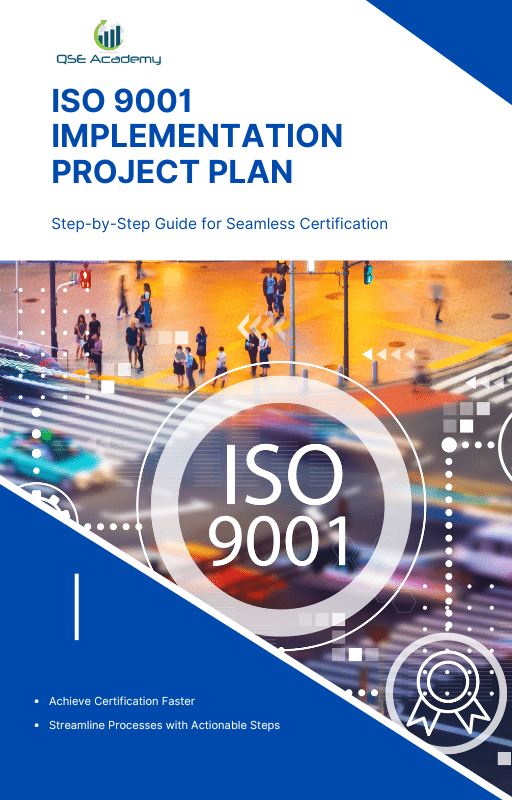ISO 9001 Employee Training : Your Business Potential
Engaging ISO 9001 Employee Training
Let’s be honest—when people hear the words ISO 9001 Employee Training, they often picture dry, mandatory sessions filled with endless slides and complicated jargon. But here’s the thing: ISO 9001 training isn’t just about ticking a compliance box—it’s about unleashing your business’s full potential.
Think about it. A company is only as strong as its people. If employees don’t understand ISO 9001 requirements, how can they consistently deliver quality? If managers aren’t trained on process improvements, how can they drive efficiency? And if teams don’t feel engaged in training, how can they confidently pass an ISO audit?
That’s why ISO 9001 Employee Training is more than just a requirement—it’s an opportunity. A well-trained workforce doesn’t just help you pass audits; it reduces errors, increases productivity, and improves customer satisfaction. When done right, training empowers employees to take ownership of quality, making ISO 9001 a natural part of daily operations rather than an intimidating set of rules.
In this guide, we’ll explore how to make ISO 9001 Employee Training engaging, effective, and actually useful—without overwhelming your team with unnecessary information. From innovative training strategies to real-world applications, you’ll learn how to transform training into a powerful tool for business success. Let’s dive in!
Understanding ISO 9001 Employee Training
If you’ve ever wondered why ISO 9001 Employee Training is such a big deal, here’s the short answer: because well-trained employees are the foundation of a successful Quality Management System (QMS).
ISO 9001 isn’t just about having the right processes in place—it’s about making sure your people understand, follow, and continuously improve those processes. And that’s where training comes in.
Imagine running a restaurant where the chef doesn’t know the recipes, the servers don’t know the menu, and the cleaning crew doesn’t follow hygiene standards. Chaos, right? The same logic applies to any business aiming for ISO 9001 certification. If employees don’t know what’s expected of them, how can they contribute to maintaining quality?
That’s why ISO 9001 Employee Training goes beyond just a one-time session or a stack of documents for employees to read. It’s about creating a culture where quality is second nature—where every employee, from top management to the frontline, understands how their role impacts the bigger picture.
The Core Training Requirements Under ISO 9001
ISO 9001 doesn’t dictate exactly how to train employees, but it does have clear expectations about what they need to know. Here are the key training areas every business should focus on:
1. Competency and Awareness – What Employees Must Know
ISO 9001 requires companies to ensure employees are competent in their roles and aware of how their work impacts quality. This means training should:
- Equip employees with the skills and knowledge needed for their specific jobs.
- Help them understand how their daily tasks contribute to quality objectives.
- Teach them about ISO 9001 principles, so they know why compliance matters.
📌 Example: A production worker doesn’t need to memorize the entire ISO 9001 standard, but they should know why following procedures reduces defects and improves customer satisfaction.
2. Mandatory Training vs. Job-Specific Training – Finding the Right Balance
Not every employee needs the same level of ISO 9001 Employee Training. Some training applies to everyone, while other sessions should be customized for specific roles.
✔ Mandatory training for all employees:
- The company’s quality policy and objectives.
- Basic ISO 9001 principles and why they matter.
- Their role in ensuring compliance and continuous improvement.
✔ Job-specific training:
- Process controls and work instructions for operational staff.
- Risk-based thinking for managers and decision-makers.
- Internal auditing procedures for compliance teams.
📌 Tip: Training should be practical and relevant—not just a one-size-fits-all lecture. Employees are more likely to engage with training that feels useful to their daily work.
3. The Role of Documentation in Training Compliance
ISO 9001 requires companies to prove that employees are properly trained. This means keeping clear records of:
- Training schedules and attendance logs.
- Employee competency assessments.
- Certificates or completion records for training programs.
Having proper documentation isn’t just for auditors—it helps businesses track progress, identify skill gaps, and ensure employees are getting the right support.
Why ISO 9001 Employee Training is the Key to Business Growth
When employees understand how and why quality matters, they don’t just follow processes—they actively look for ways to improve them. That’s the real power of ISO 9001 Employee Training—it transforms compliance from a checklist into a mindset of excellence.
In the next section, we’ll dive into how to make ISO 9001 Employee Training engaging, so it’s not just another dull requirement but something employees actually enjoy and benefit from. Because let’s face it—nobody remembers a boring PowerPoint presentation!
The Secret to Making ISO 9001 Employee Training Engaging
Let’s be honest—when people hear the word “training,” they often picture long, boring presentations, outdated manuals, and a struggle to stay awake. But ISO 9001 Employee Training doesn’t have to be a dull, mandatory task. In fact, when done right, it can be a powerful tool to improve efficiency, boost employee confidence, and drive real business success.
The key? Make training engaging, interactive, and relevant. Employees are far more likely to absorb and apply what they learn if the training feels useful to their actual jobs. So, how do you turn ISO 9001 training from a dreaded requirement into something employees actually enjoy? Let’s dive into some effective strategies.
Moving Beyond Boring PowerPoint Presentations
Traditional training methods—think long lectures and walls of text—are not the best way to teach employees about ISO 9001. Why? Because people learn best when they’re actively involved, not just passively listening.
Here’s how to make ISO 9001 Employee Training more engaging:
✅ Use real-world examples – Show how ISO 9001 principles apply to your specific industry and company. Abstract concepts become much easier to understand when they’re connected to everyday tasks.
✅ Make it hands-on – Instead of just explaining procedures, demonstrate them in action. Employees learn best by doing, so give them real scenarios where they can practice quality management principles.
✅ Encourage discussion – Turn training sessions into interactive conversations rather than one-way lectures. Ask employees how they see ISO 9001 affecting their roles and encourage them to share their experiences.
📌 Example: Instead of reading through a long presentation on nonconformities, have employees analyze actual case studies of quality failures and brainstorm how they could have been prevented.
Tailoring Training for Different Employee Roles
One of the biggest mistakes companies make with ISO 9001 Employee Training is using a one-size-fits-all approach. Not every employee needs the same level of training, and delivering relevant content makes a huge difference in engagement.
Here’s how to make training work for different roles:
✔ For frontline employees:
- Focus on practical, job-specific procedures and how they impact quality.
- Teach them to identify and report quality issues effectively.
- Use hands-on training, like role-playing exercises or process walkthroughs.
✔ For managers and team leaders:
- Emphasize risk-based thinking and continuous improvement strategies.
- Show them how to track quality metrics and lead by example.
- Provide real-life case studies of companies that improved performance through ISO 9001.
✔ For internal auditors and compliance teams:
- Dive deeper into ISO 9001 requirements and audit procedures.
- Train them on how to conduct effective internal audits.
- Provide access to advanced courses or certification programs.
📌 Tip: Keep training focused and relevant—employees are much more engaged when they see how ISO 9001 Employee Training directly benefits them.
Why Engaging ISO 9001 Employee Training Matters
At the end of the day, ISO 9001 Employee Training isn’t just about passing audits or meeting compliance requirements—it’s about building a culture of quality. When employees truly understand how their work contributes to overall business success, they’re more motivated to follow best practices, spot potential issues, and suggest improvements.
By making training interactive, role-specific, and engaging, you can transform ISO 9001 from a dry regulation into something that drives real growth and improvement. And the best part? Employees will actually remember and apply what they learn—without the need for endless reminders.
Next up, we’ll explore some proven training strategies, including the 70-20-10 learning model and how to use technology to make training easier and more effective. Stay tuned!
Strategies for Effective ISO 9001 Employee Training
By now, we know that ISO 9001 Employee Training isn’t just about compliance—it’s about empowering employees, improving efficiency, and building a culture of quality. But how do you actually make training effective?
The truth is, not all training methods work equally well. Some companies rely too heavily on classroom-style learning, while others throw employees into real-world tasks with no structured guidance. The best approach? A mix of learning methods that keep employees engaged, reinforce knowledge over time, and make ISO 9001 principles second nature.
Let’s explore two powerful strategies that can help make ISO 9001 Employee Training more effective, practical, and memorable.
The 70-20-10 Learning Model for Maximum Impact
One of the best-kept secrets of effective employee training is the 70-20-10 learning model. This approach recognizes that people learn best through a combination of experience, collaboration, and formal education—not just sitting in a classroom or reading a manual.
Here’s how it breaks down:
✔ 70% Learning Through Experience
- Employees learn best by doing. This means hands-on tasks, real-world application, and problem-solving in their actual roles.
- Example: Instead of just reading about quality inspections, employees participate in them, identifying nonconformities and suggesting improvements.
✔ 20% Learning Through Interaction
- People absorb knowledge better when they discuss, share, and learn from others.
- Example: Pair new employees with experienced mentors or have teams participate in ISO 9001 brainstorming sessions where they identify areas for improvement.
✔ 10% Learning Through Formal Instruction
- While necessary, classroom training and online courses should only be one piece of ISO 9001 training.
- Example: Employees can take structured ISO 9001 Employee Training courses, but their real learning happens when they apply those concepts in daily work.
📌 Tip: The best training happens on the job. Reinforce classroom learning with hands-on experience and team discussions to make it stick.
Using Technology to Make Training Easier and More Engaging
Gone are the days when ISO 9001 Employee Training meant flipping through binders or sitting through hours of lectures. Thanks to technology, training can be more engaging, accessible, and even fun.
Here’s how technology can supercharge your training efforts:
🔹 Online Learning Platforms – E-learning systems like TalentLMS, Docebo, or even simple Google Classroom allow employees to complete ISO 9001 training at their own pace.
🔹 Microlearning (Short, Focused Lessons) – Instead of long, overwhelming training sessions, break lessons into short, digestible modules that employees can complete in 5-10 minutes.
🔹 Gamification & Interactive Training – Adding quizzes, challenges, and even friendly competition (like leaderboards for top quiz scores) makes training more engaging.
🔹 Video-Based Learning – People retain information better when they see it in action. Instead of handing out a document on corrective actions, create a short video demonstrating the process.
📌 Tip: Not every employee learns the same way. Offering a mix of online courses, interactive discussions, and real-world applications ensures everyone benefits from training.
Why These Strategies Matter for ISO 9001 Employee Training
The goal of ISO 9001 Employee Training isn’t just to deliver information—it’s to help employees apply what they learn in their daily work. By combining hands-on experience, team collaboration, and digital learning tools, businesses can create a training system that:
✅ Keeps employees engaged and motivated
✅ Makes ISO 9001 principles easy to remember and apply
✅ Reduces training time while improving effectiveness
✅ Ensures long-term compliance and continuous improvement
In the next section, we’ll dive into how to measure the success of your ISO 9001 training—because great training doesn’t just happen once, it evolves over time. Stay tuned!
Measuring the Success of ISO 9001 Employee Training
So, you’ve put time and effort into developing a strong ISO 9001 Employee Training program. You’ve made it engaging, interactive, and relevant. But how do you know if it’s actually working?
The truth is, training isn’t just about delivering information—it’s about making sure employees understand, retain, and apply what they’ve learned. If training isn’t effective, employees may forget key concepts, struggle with compliance, or fail to apply ISO 9001 principles correctly in their daily tasks.
That’s why measuring the success of ISO 9001 Employee Training is crucial. By tracking the right metrics, gathering employee feedback, and making continuous improvements, you can ensure that training is driving real results—not just ticking a compliance box.
How to Know If Your Training Is Actually Working
The best way to measure the effectiveness of ISO 9001 Employee Training is to look at real-world outcomes. Here are some key performance indicators (KPIs) that can help you assess the impact of your training efforts:
✅ Employee Competency Levels
- Are employees demonstrating a strong understanding of ISO 9001 processes?
- Do they follow procedures correctly without frequent mistakes?
- Are they confident in handling quality-related tasks?
✅ Training Completion Rates
- How many employees have completed their required training?
- Are they finishing courses on time, or are there delays?
✅ Audit Performance
- Are employees prepared for ISO 9001 audits?
- Are there fewer nonconformities related to employee actions or misunderstandings?
- Do auditors recognize employee awareness and competency as a strength?
✅ Error and Nonconformity Rates
- Has there been a reduction in errors, defects, or process deviations after training?
- Are corrective actions decreasing over time?
✅ Employee Feedback and Engagement
- Do employees feel the training is helpful and relevant to their work?
- Are they actively participating in discussions and asking questions?
- Do they suggest process improvements after completing training?
📌 Tip: Don’t assume training is effective just because employees completed it—assess their performance and get direct feedback to measure real impact.
Employee Feedback – Why It’s Essential and How to Gather It
One of the best ways to improve ISO 9001 Employee Training is to ask employees directly how they feel about it. If training is confusing, too long, or not relevant, they won’t engage with it—and that’s a problem.
Here are a few ways to gather useful feedback from employees:
🔹 Post-Training Surveys – Short, anonymous surveys can help you understand what employees liked, what they struggled with, and what could be improved.
🔹 One-on-One Discussions – Managers can check in with employees after training to see if they feel confident applying what they learned.
🔹 Team Debriefs – Hold small group discussions where employees share key takeaways and ask questions.
🔹 Observation and Performance Reviews – Watch employees in action to see if they are correctly applying ISO 9001 principles.
📌 Tip: Encourage honest feedback! If employees feel comfortable sharing their thoughts, you’ll get valuable insights to improve training over time.
Continuous Improvement – Keeping Training Relevant and Effective
ISO 9001 is all about continuous improvement, and that applies to training as well. What worked last year might not be as effective today. Businesses evolve, processes change, and ISO 9001 Employee Training should evolve too.
Here’s how to keep training fresh, relevant, and impactful:
🔹 Review and update training materials regularly – Make sure content reflects the latest ISO 9001 updates and company processes.
🔹 Adapt training based on real-world performance – If employees are struggling with a specific process, add more targeted training.
🔹 Introduce refresher courses – Periodic training helps employees retain knowledge and stay up to date with best practices.
🔹 Celebrate training success – Recognize employees who apply what they’ve learned and contribute to quality improvements.
📌 Tip: Think of training as an ongoing process, not a one-time event. The more you refine and improve it, the more effective it becomes!
Why Measuring ISO 9001 Employee Training Matters
A great ISO 9001 Employee Training program doesn’t just happen—it’s built, tested, and continuously improved over time. By tracking success, gathering feedback, and making regular updates, you ensure that employees are engaged, competent, and contributing to quality excellence.
In the next section, we’ll explore the big-picture impact of ISO 9001 Employee Training on business success—from reducing errors to improving efficiency and making compliance easier than ever. Stay tuned!
The Impact of ISO 9001 Employee Training on Business Success
By now, we’ve covered why ISO 9001 Employee Training matters, how to make it engaging, and how to measure its effectiveness. But here’s the big question: How does training actually impact your business?
Some companies see training as just another compliance requirement—something to get through before an audit. But in reality, ISO 9001 Employee Training is one of the most powerful tools for business growth. When employees truly understand quality management principles, everything runs smoother—from daily operations to customer satisfaction to long-term profitability.
Let’s break down the ways a strong ISO 9001 Employee Training program positively impacts your business.
How Well-Trained Employees Drive Quality and Efficiency
A well-trained team isn’t just good for audits—it’s good for business. When employees fully understand their role in maintaining quality, they work smarter, make fewer mistakes, and contribute to continuous improvement.
Here’s how ISO 9001 Employee Training boosts overall efficiency:
✅ Fewer Mistakes, Less Rework
- Employees who are properly trained are less likely to make costly mistakes that require rework.
- Proper training reduces defects, errors, and inefficiencies, saving both time and money.
✅ Consistent Processes Across Teams
- When everyone follows the same well-documented processes, there’s less confusion and inconsistency.
- Employees can easily transition between roles or teams without retraining from scratch.
✅ Faster Problem-Solving & Decision-Making
- Employees trained in risk-based thinking can identify potential issues before they escalate.
- Instead of waiting for management to intervene, trained employees can proactively solve minor quality issues.
📌 Example: A company that trains its customer service team on ISO 9001 complaint handling resolves issues faster, leading to higher customer satisfaction.
Training as a Competitive Advantage
Did you know that companies with strong training programs consistently outperform their competitors?
Having a well-trained workforce doesn’t just help with compliance—it builds a company culture that values quality, efficiency, and customer satisfaction.
Here’s how ISO 9001 Employee Training gives businesses a competitive edge:
✔ Better Customer Satisfaction – Customers trust businesses that consistently deliver high-quality products and services.
✔ Higher Employee Engagement – Employees who understand their role in quality improvement feel more motivated and valued.
✔ Stronger Brand Reputation – Companies known for their quality commitment attract more customers and build long-term loyalty.
📌 Tip: Companies that invest in training aren’t just training for ISO 9001—they’re training for success.
Preparing for an Audit – How Proper Training Makes ISO 9001 Compliance Easy
When an ISO 9001 audit approaches, ISO 9001 Employee Training becomes one of your biggest assets. Why? Because well-trained employees make audits easier, smoother, and less stressful.
Here’s how:
✅ Employees Can Answer Auditor Questions with Confidence
- Auditors often interview employees to check their knowledge of ISO 9001 processes.
- If employees are well-trained, they won’t panic or struggle to explain how they follow quality procedures.
✅ Training Records Prove Compliance
- Auditors will ask for proof that employees have received proper training.
- Keeping well-organized training records ensures you can provide documentation instantly.
✅ Fewer Nonconformities & Findings
- The more employees understand ISO 9001 requirements, the less likely they are to unintentionally deviate from procedures.
- A strong ISO 9001 Employee Training program reduces the risk of major nonconformities.
📌 Tip: Preparing for an audit is so much easier when training is a continuous process, rather than a last-minute rush.
Why Investing in ISO 9001 Employee Training is Always Worth It
At the end of the day, ISO 9001 Employee Training isn’t just about passing an audit—it’s about building a stronger, smarter, and more successful business. Companies that prioritize training experience fewer quality issues, smoother operations, and happier customers.
In the next section, we’ll wrap things up with key takeaways and how to create a long-term training plan that keeps employees engaged, motivated, and continuously improving.
Turning ISO 9001 Employee Training into a Growth Engine
By now, it’s clear that ISO 9001 Employee Training isn’t just a requirement—it’s a powerful business tool. When done right, it goes beyond compliance and becomes a driving force for quality, efficiency, and long-term success. But here’s the thing: training isn’t a one-time event—it’s an ongoing journey.
The most successful companies don’t just train employees once and forget about it. They create a continuous learning environment where training evolves alongside their business. So, how do you build a long-term training strategy that keeps employees engaged, motivated, and constantly improving? Let’s break it down.
Key Takeaways for Effective ISO 9001 Employee Training
Let’s quickly recap the most important lessons from this guide:
✔ ISO 9001 Employee Training is a Business Asset – It’s not just about compliance; it drives efficiency, quality, and customer satisfaction.
✔ Engaging Training is More Effective – Ditch the boring lectures and use interactive, hands-on, and role-specific learning methods.
✔ Measure Training Success – Track key performance indicators (KPIs), gather employee feedback, and adjust training strategies accordingly.
✔ Make Training Continuous – Training isn’t a one-and-done deal; refresher courses and ongoing education keep employees up to date and audit-ready.
✔ A Strong Training Culture Builds a Competitive Edge – Companies that invest in their employees outperform competitors and strengthen their brand reputation.
How to Build a Long-Term ISO 9001 Employee Training Plan
Want to make ISO 9001 Employee Training a long-term success? Here are a few strategies to keep training relevant, engaging, and effective:
✅ Schedule Regular Training Refreshers
- Employees forget what they don’t use—schedule quarterly or annual refresher courses to reinforce key concepts.
- Use short training sessions (microlearning) to keep it light, engaging, and manageable.
✅ Integrate Training into Daily Workflows
- Make ISO 9001 training part of onboarding for new employees so they understand quality expectations from day one.
- Encourage peer mentoring—experienced employees can help new hires understand quality management processes.
✅ Leverage Digital Tools for Continuous Learning
- Use e-learning platforms, video tutorials, and interactive quizzes to keep training flexible and accessible.
- Allow employees to access training materials anytime so they can revisit important topics when needed.
✅ Encourage Employee Involvement
- Let employees suggest improvements for training content based on real-world experiences.
- Reward employees who actively participate in quality improvement initiatives—this reinforces a culture of learning and responsibility.
📌 Tip: Keep training engaging, relevant, and ongoing—when employees see training as a tool for growth rather than just a requirement, they’ll actively engage and apply what they’ve learned.
Final Thoughts: Unleashing Your Business Potential with ISO 9001 Employee Training
At the heart of every successful business is a well-trained, engaged, and quality-focused team. Investing in ISO 9001 Employee Training isn’t just about meeting standards—it’s about creating a smarter, stronger, and more efficient workforce that helps your business thrive.
When employees understand their role in quality management, they don’t just follow processes—they actively improve them. And that’s the secret to making ISO 9001 more than just a certification—it becomes a mindset that drives success at every level of your business.
So, are you ready to transform ISO 9001 Employee Training into a growth engine for your company? Start today by making training engaging, continuous, and truly valuable—your employees (and your business) will thank you for it!
💬 What’s your biggest challenge when it comes to ISO 9001 Employee Training? Drop a comment below and let’s chat!
Looking for More Resources on ISO 9001?
Looking for ISO 9001 Resources Tailored to Your Industry?
If this article helped clarify ISO 9001, take the next step with our industry-focused tools designed to simplify your certification journey:
📦 ISO 9001 Documentation Kits by Industry: Whether you’re in manufacturing, construction, consulting, or healthcare — we have complete, ready-to-use documentation tailored for your sector.
🎓 Online ISO 9001 Training: Learn how to implement ISO 9001 effectively with our easy-to-follow video lessons, real-world examples, and practical exercises.
📋 ISO 9001 Checklist: Download our step-by-step checklist to ensure your QMS meets all the 9001:2015 requirements from start to finish.
These resources are crafted to save you time, reduce stress, and help you achieve certification with confidence. Choose your industry and start now!

make ISO standards less intimidating and more approachable for everyone.
Whether it’s ISO 9001, ISO 22000, or the cosmetics-focused ISO 22716,
I’ve spent my career turning complex jargon into clear, actionable steps
that businesses can actually use. I’m not here to call myself an expert—I prefer “enthusiast” because I truly love what I do.
There’s something incredibly rewarding about helping people navigate food safety and quality management systems
in a way that feels simple, practical, and even enjoyable.
When I’m not writing about standards, you’ll probably find me playing Piano 🎹, connecting with people, or diving into my next big project💫.
- I’m an engineer specialized in the food and agricultural industry
- I have a Master’s in QHSE management and over 12 years of experience as a Quality Manager
- I’ve helped more than 15 companies implement ISO 9001, ISO 22000, ISO 22716, GMP, and other standards
- My clients include food producers, cosmetics manufacturers, laboratories, and service companies
- I believe quality systems should be simple, useful, and efficient
- Outside of work, I play piano and love learning something new every day
Let’s make ISO less about stress and more about success! 🙏
